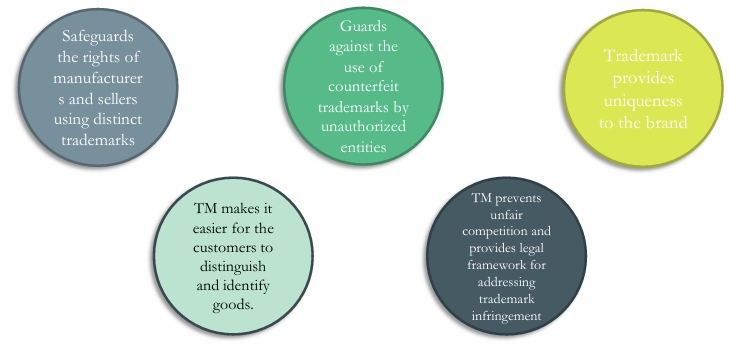- within Antitrust/Competition Law topic(s)
- with readers working within the Pharmaceuticals & BioTech industries
TRADEMARKS
Section 2(1)(m) says that "Mark" includes a device, brand, heading, label, ticket, name, signature, word, letter, numeral, shape of goods, packaging or combination of colours or any combination thereof".
Section 2 (zb) of the Trademarks Act, 1999 defines "Trademarks" as a mark capable of being represented graphically and which is capable of distinguishing the goods or services of one person from those of others and may include shape of goods, their packaging and combination of colors and -"
- In layman's language a trade mark is popularly known as brand name. It is a visual symbol which may be a word, signature, name, device, label, numerals or combination of colors.
- Essentials of a TM
-
- capable of being represented graphically; and
- capable of distinguishing the goods or services of one person from those of others.
OBJECT OF THE TRADEMARK
as explained in Dau Dayal v. State of Uttar Pradesh

CERTIFICATION TRADEMARK
Section 2 (1) (e) of The Trade Marks Act, 1999
"certification trade mark" means a mark capable of distinguishing the goods or services in connection with which it is used in the course of trade which are certified by the proprietor of the mark in respect of origin, material, mode of manufacture of goods or performance of services, quality, accuracy or other characteristics from goods or services not so certified and registrable as such under Chapter IX in respect of those goods or services in the name, as proprietor of the certification trade mark, of that person;
A certification trademark indicates that a product or service meets specific standards or has particular characteristics (e.g., quality, origin, material).
- The TM ACT, distinguishes goods/services certified by the proprietor regarding – Origin, Material, Mode of manufacture, Performance of services and Quality or accuracy
- Purpose -
-
- Ensures products meet standardized criteria set by the proprietor.
- Protects consumers by providing reliable information about quality and safety. And Differentiates certified products from uncertified ones, ensuring trust and assurance for consumers.
- Few Examples - ISI Mark – Conformity to Bureau of Indian Standards, BSI Hallmark – Purity of gold, Woolmark – Products made from 100% wool.
To read this article in full, please click here.
The content of this article is intended to provide a general guide to the subject matter. Specialist advice should be sought about your specific circumstances.



